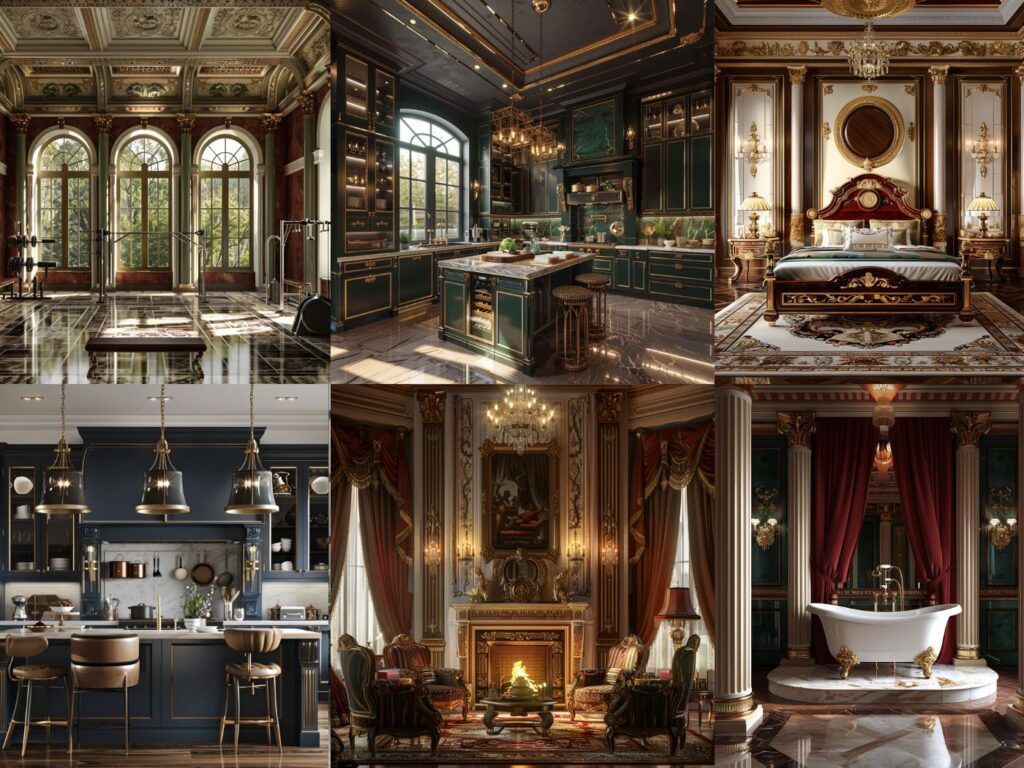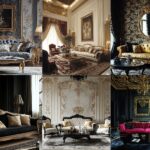Imagine stepping into a space that exudes grandeur and sophistication, where every detail speaks of timeless elegance. That’s the allure of Empire interior design. Rooted in the opulence of early 19th-century France, this style transforms your home into a regal sanctuary with its rich textures, bold colors, and luxurious furnishings.
You’re probably wondering how to achieve such splendor without overwhelming your modern lifestyle. The key lies in balancing classic elements with contemporary touches.
By understanding the core principles of Empire design—like symmetry, ornate details, and sumptuous materials—you can create an environment that’s both majestic and livable. Ready to elevate your living space? Let’s explore how you can incorporate these timeless elements into your home seamlessly.
15 Empire Interior Design Ideas And Styles For A Regal Space
#1. Empire Living Room
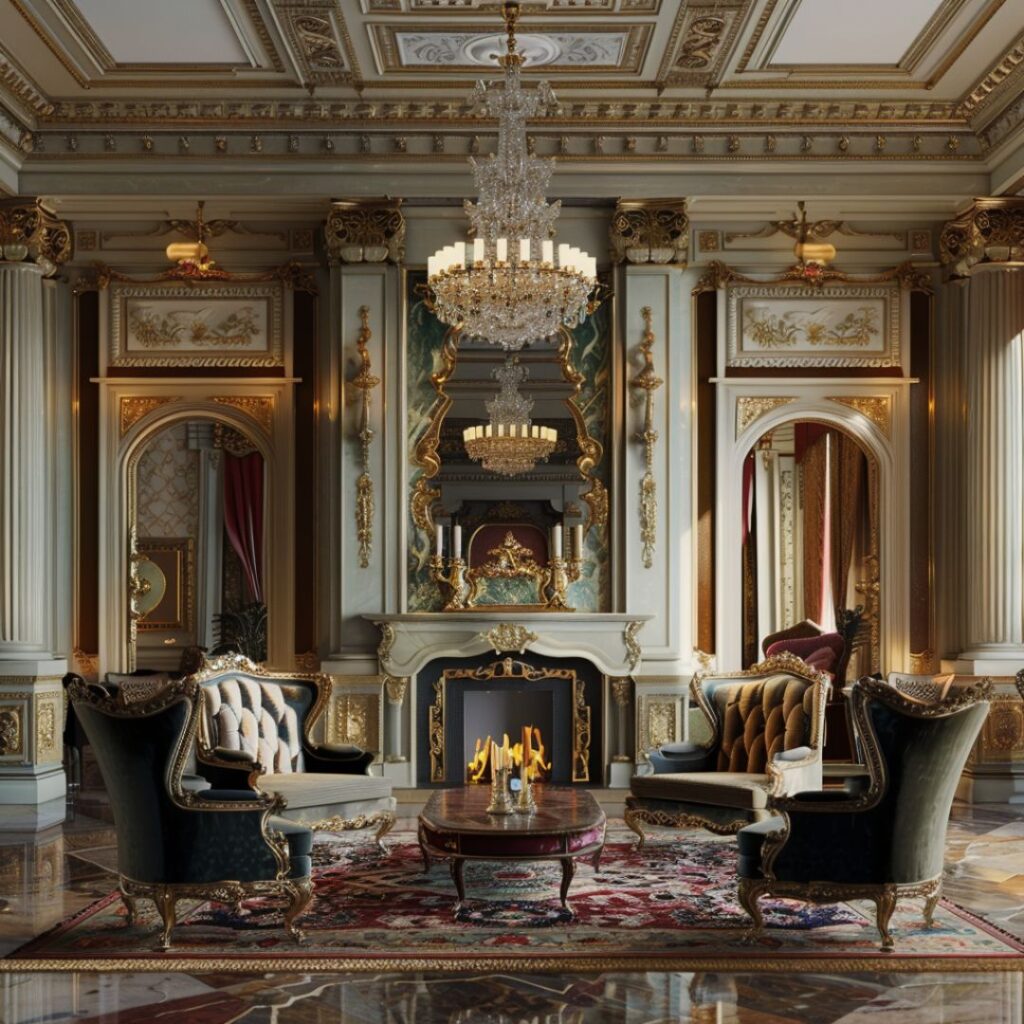
#2. Empire Living Room Interior Style

#3. Empire Living Room Interior Idea
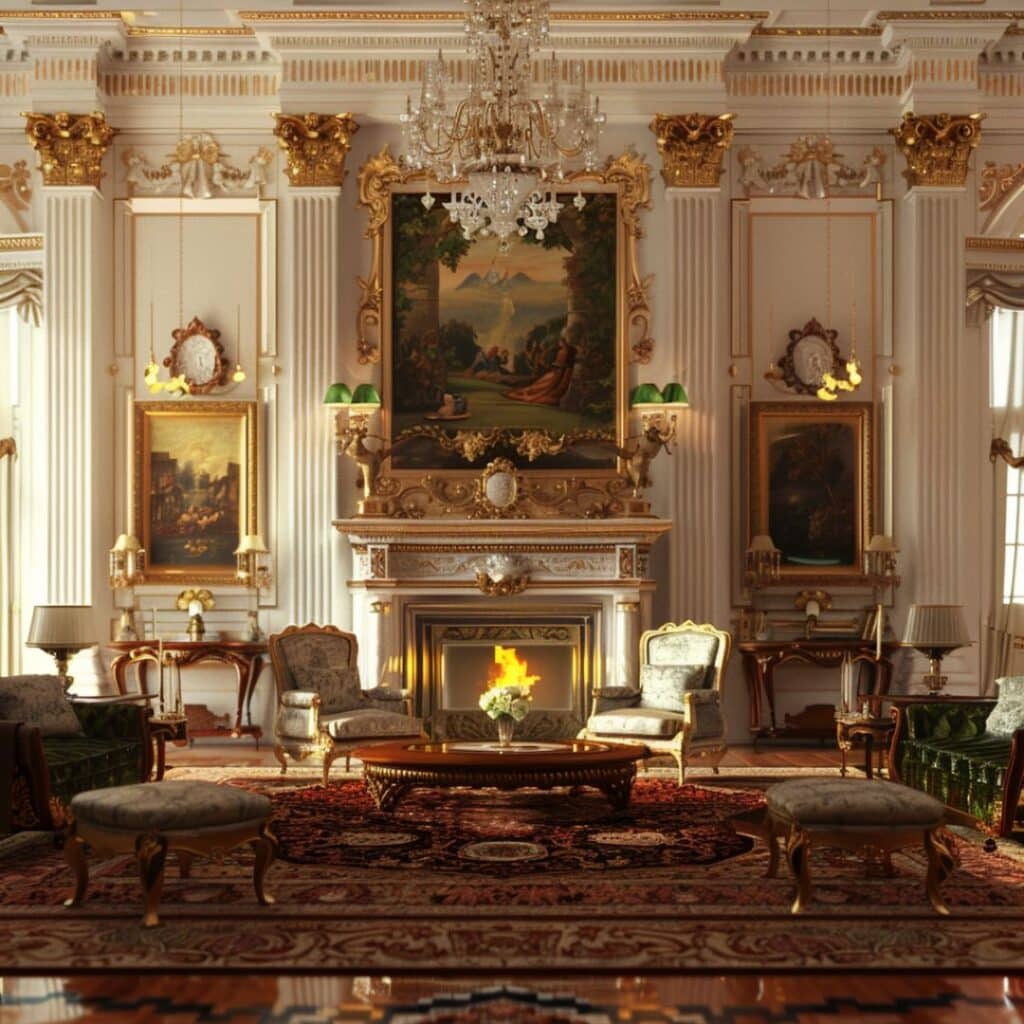
#4. Empire Living Room Interior Design

#5. Empire Kitchen

#6. Empire Kitchen Interior Style
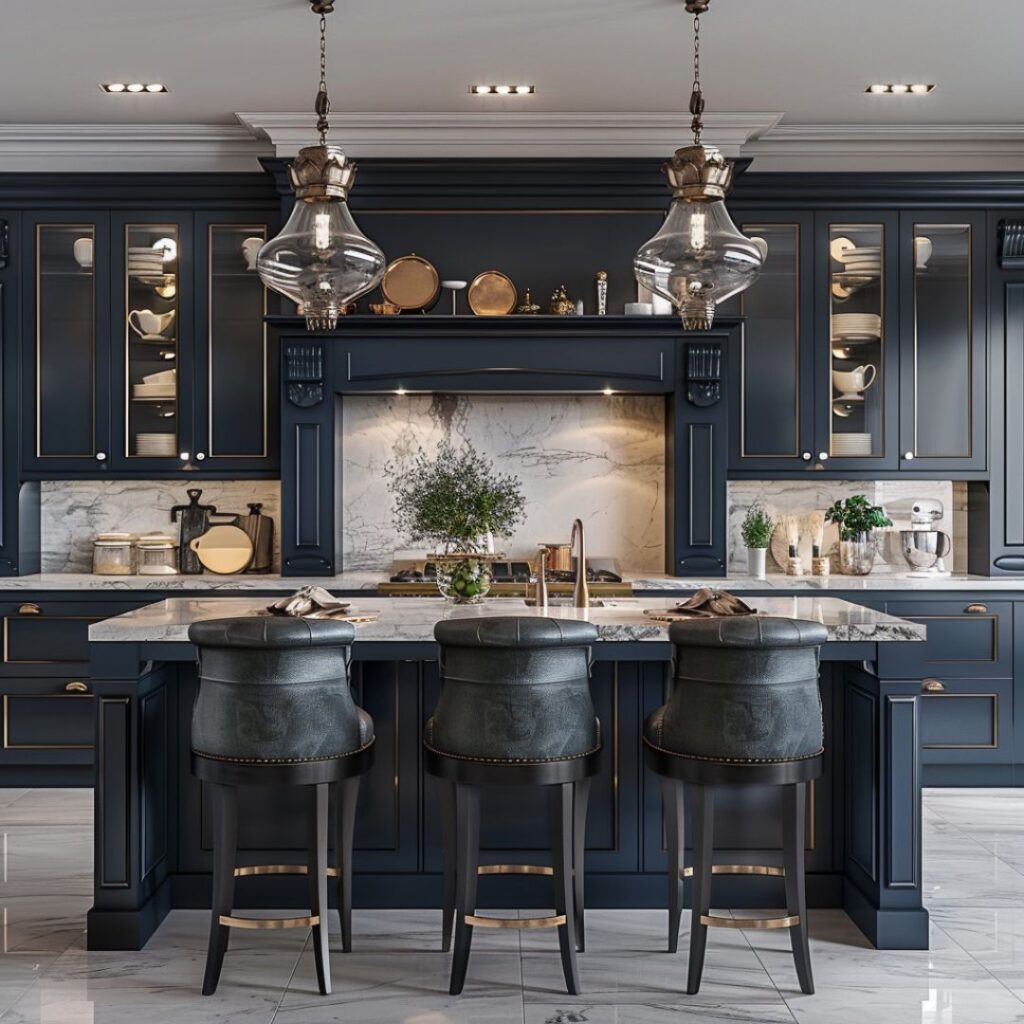
#7. Empire Kitchen Interior Idea
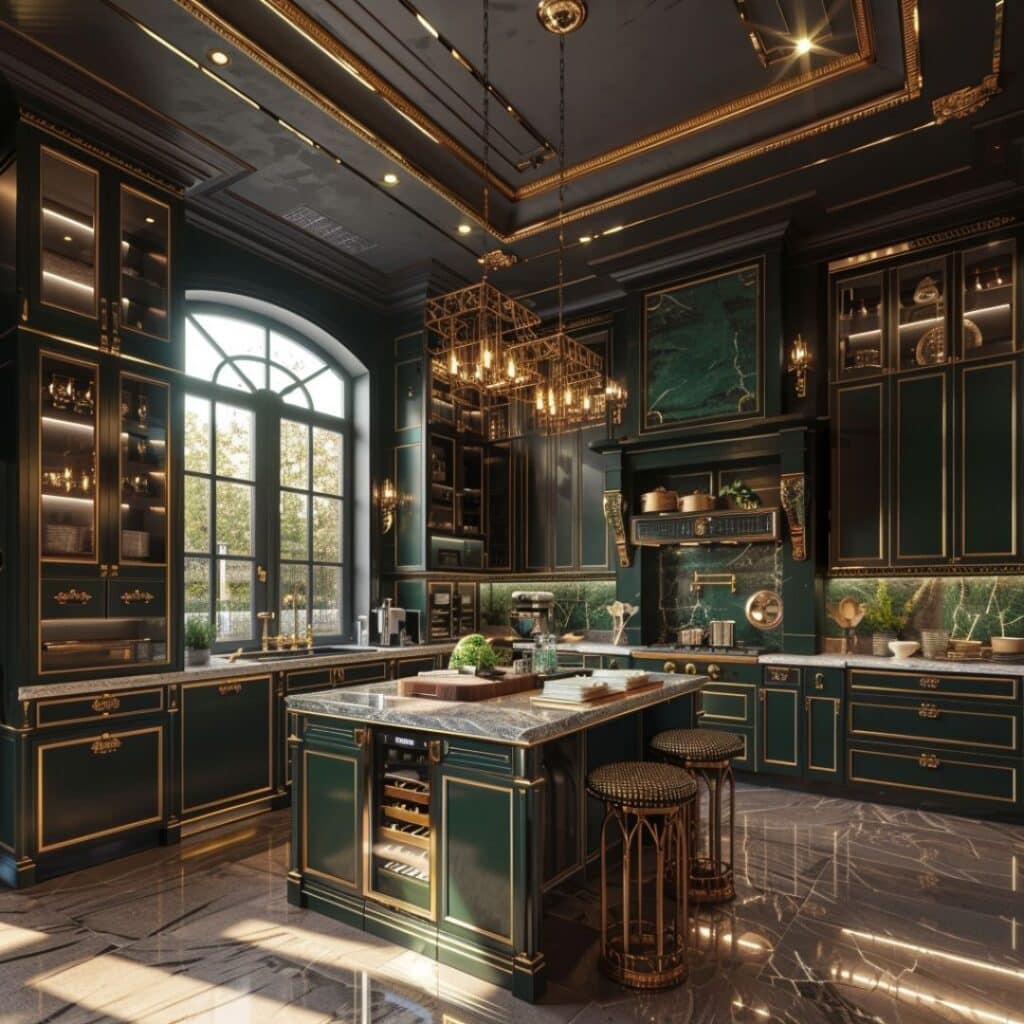
#8. Empire Kitchen Interior Design

#9. Empire Home Gym
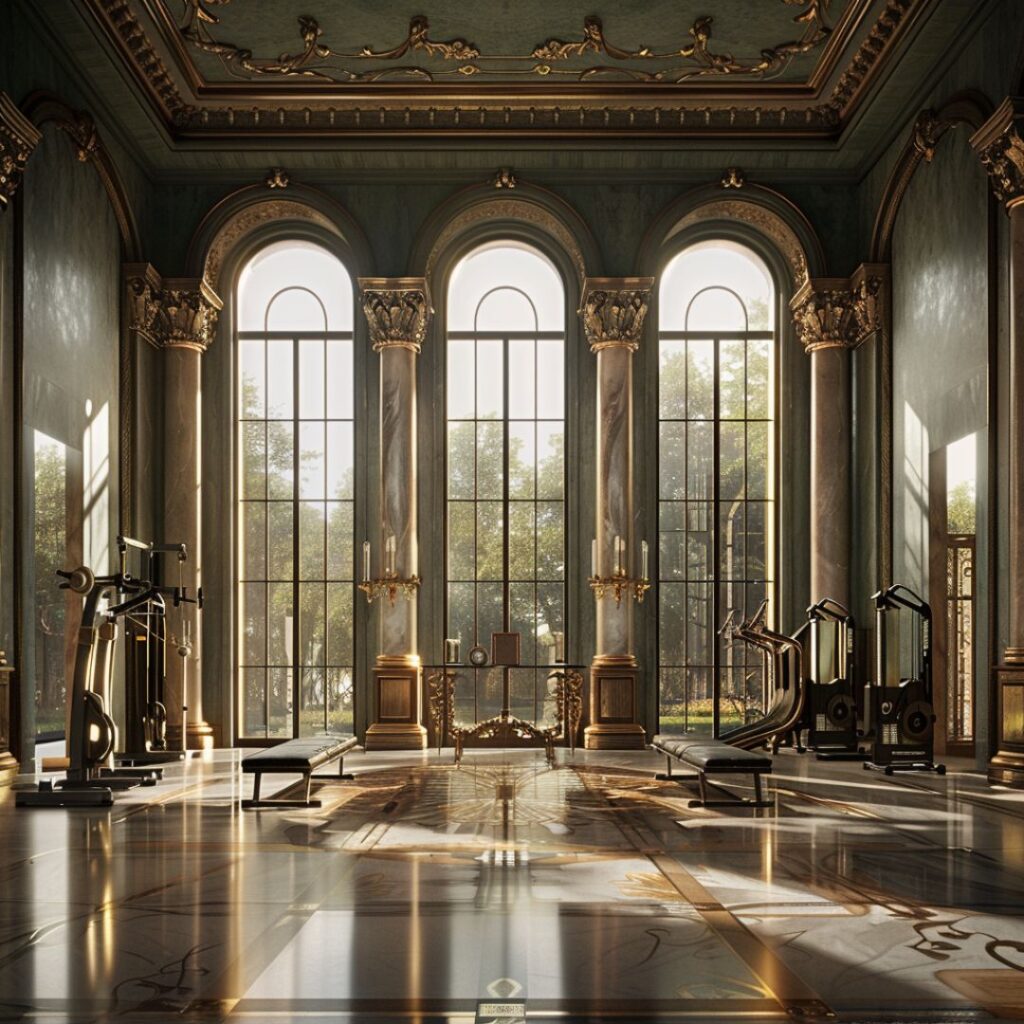
#10. Empire Home Gym Interior Idea
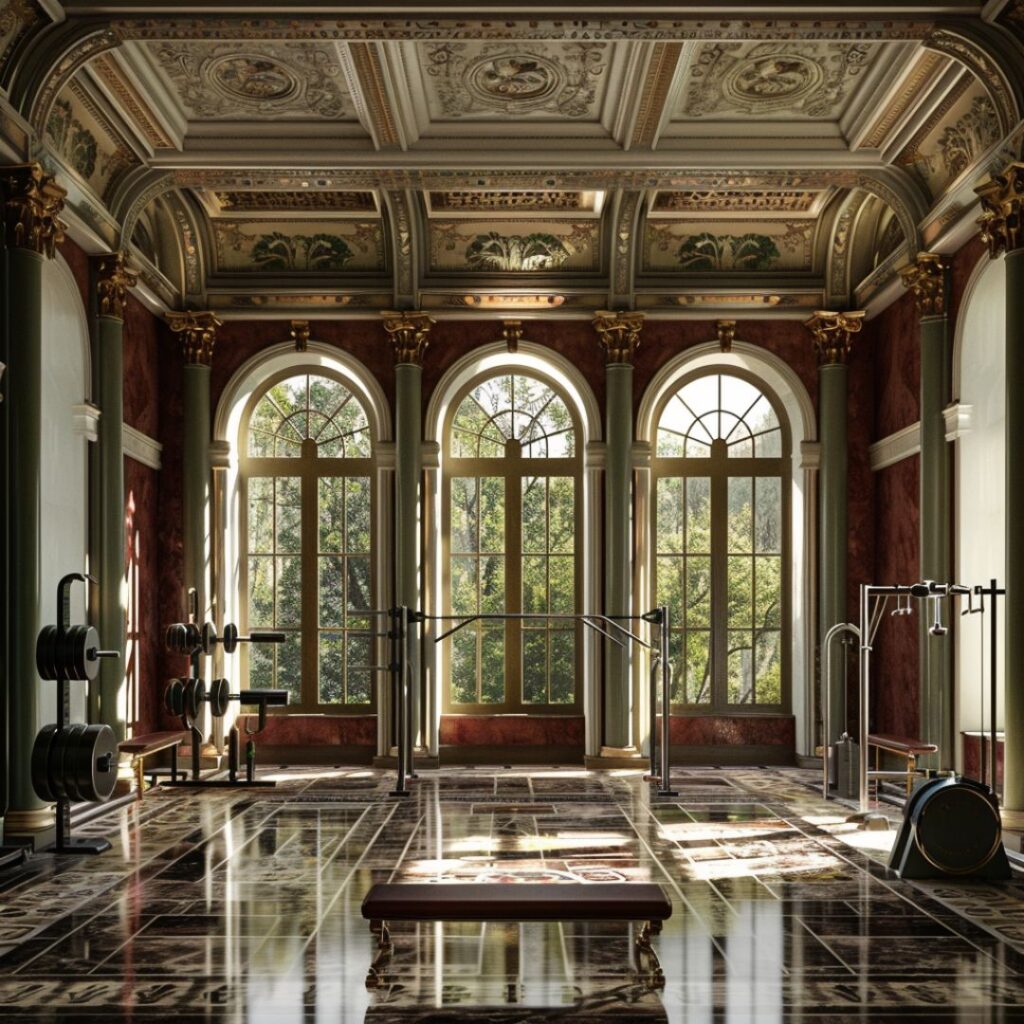
#11. Empire Home Gym Interior Design
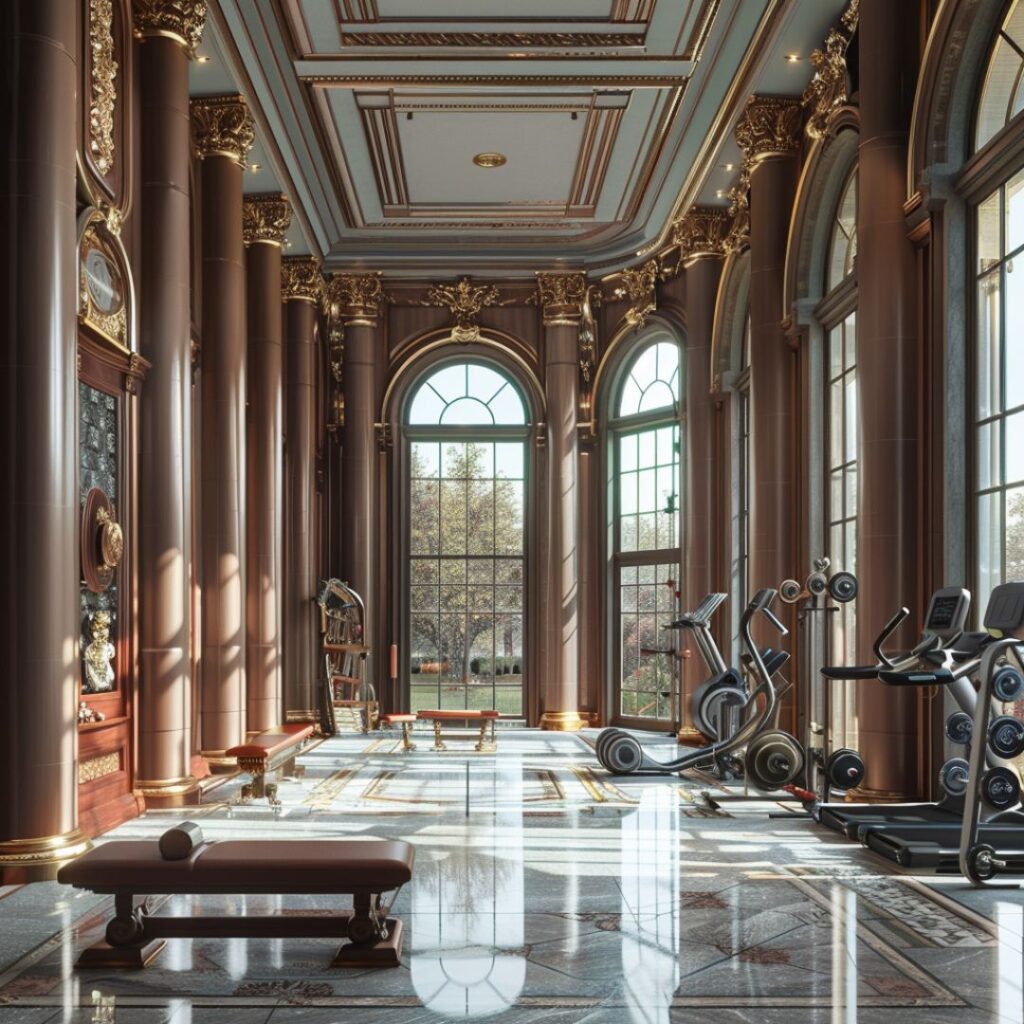
#12. Empire Bedroom Interior Idea
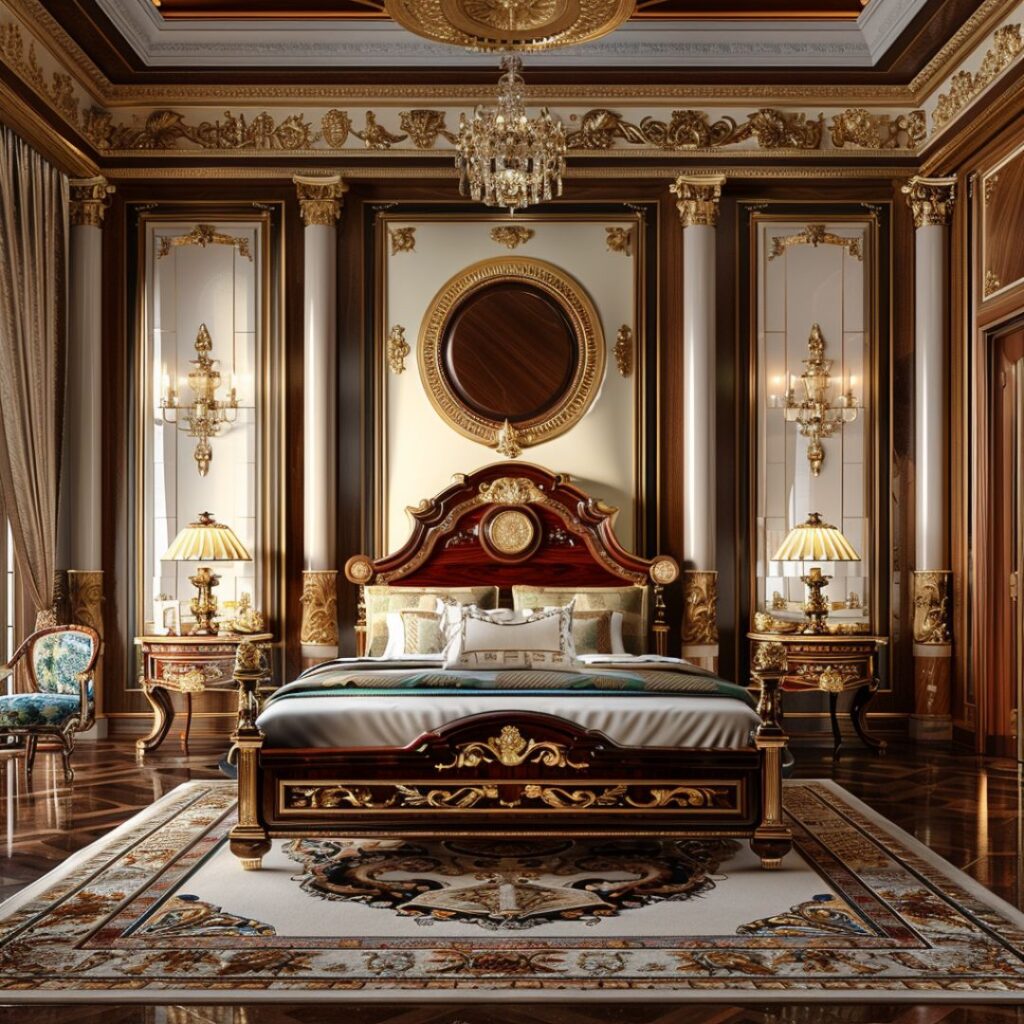
#13. Empire Bedroom Interior Design
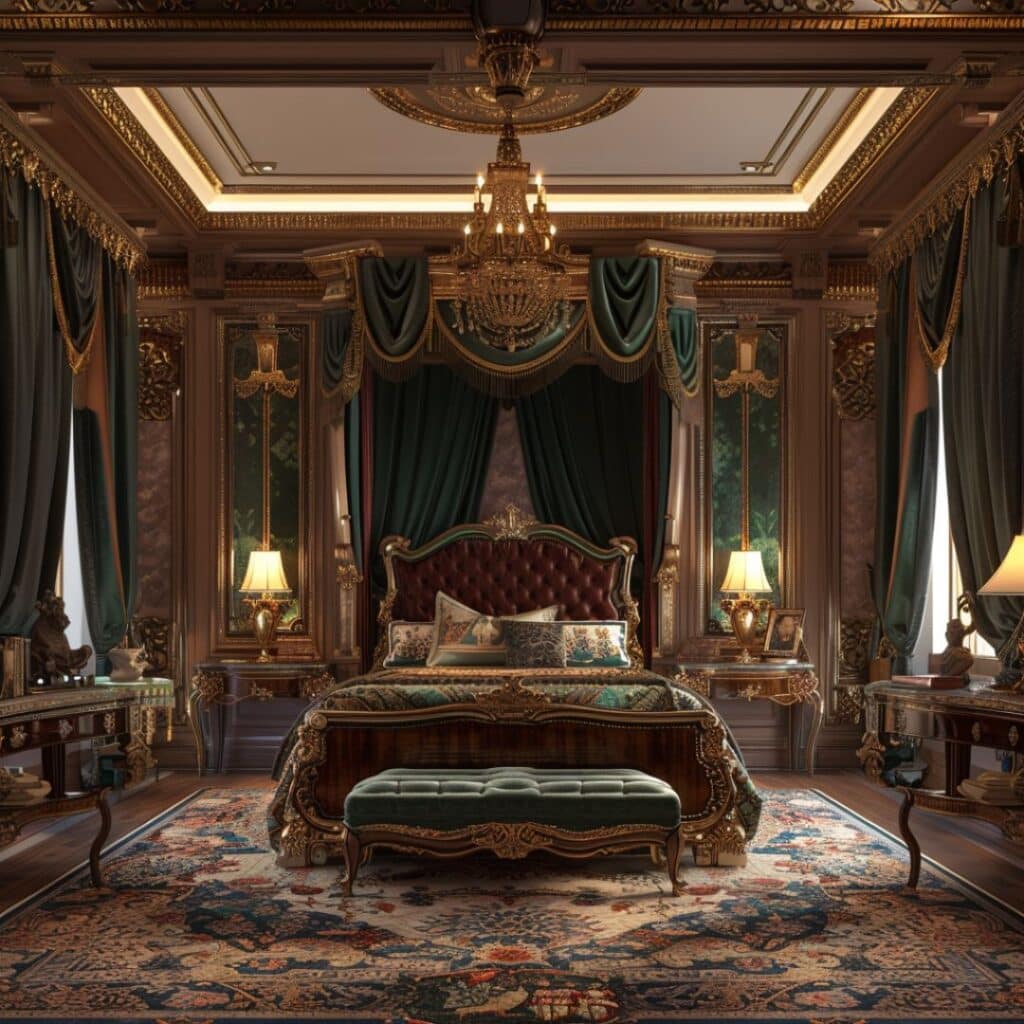
#14. Empire Bathroom Interior Idea
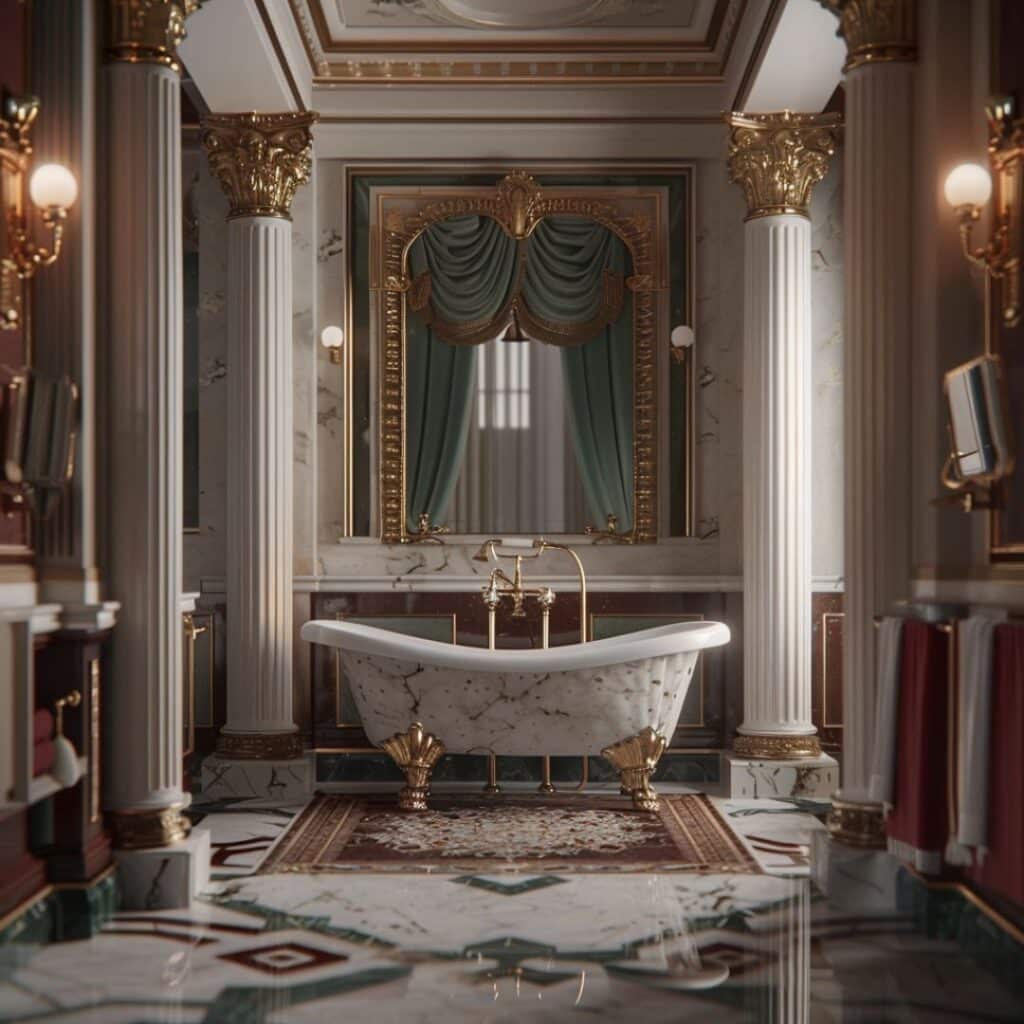
#14. Empire Bathroom Interior Design
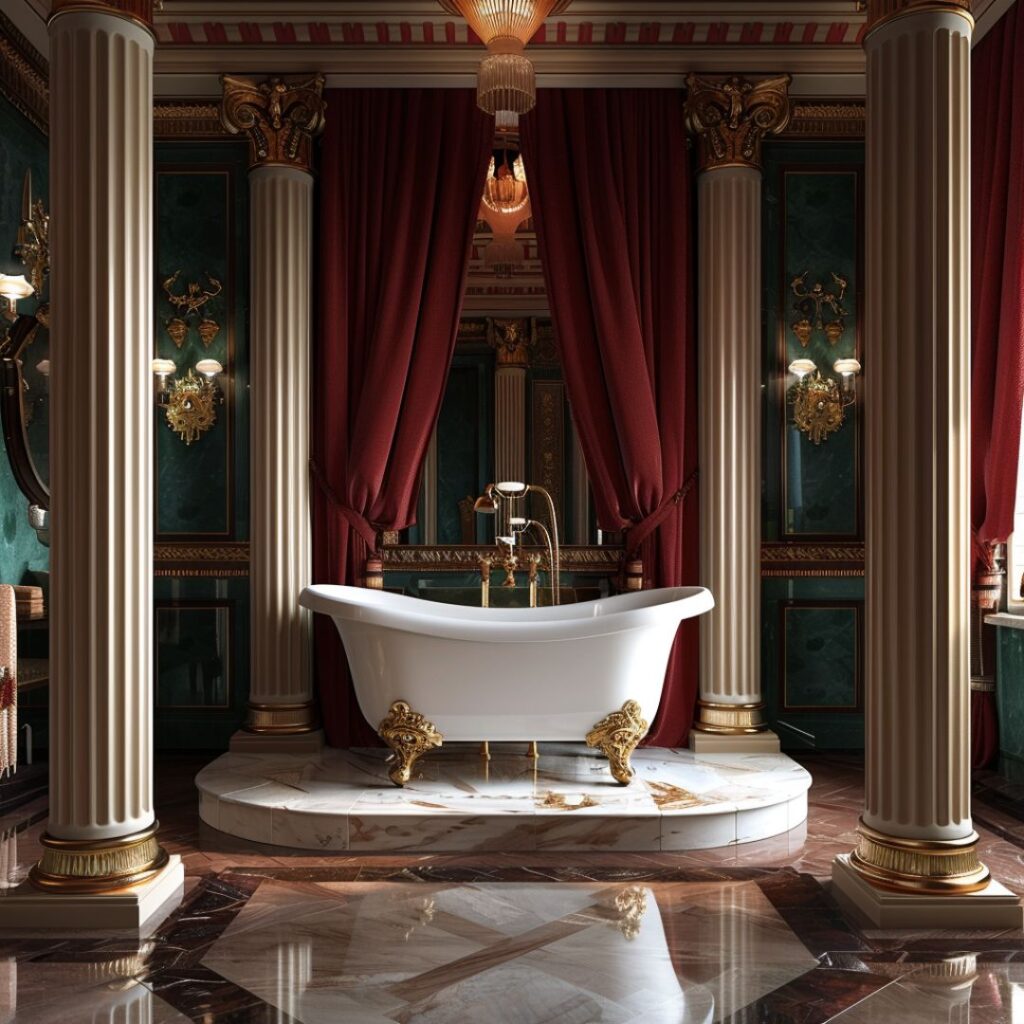
Overview of Empire Interior Design
Empire interior design, rooted in early 19th-century France, embodies grandeur and opulence. It blends classic elements with modern touches to create a luxurious yet livable space.
Historical Background
The Empire style emerged during Napoleon’s reign (1804-1815). Influenced by Roman and Egyptian motifs, it symbolized power and authority. This period emphasized symmetry, rich textures, and bold colors.
Key Characteristics
Symmetry plays a vital role in this design. Elements like furniture and decor align perfectly to create balance. Ornate details add sophistication with lavish carvings and gilded accents.
Materials include mahogany, marble, silk, and velvet. These materials provide texture and luxury throughout the space. Bold colors such as deep reds, blues, greens enhance the visual impact.
Furniture often features classical motifs such as laurel wreaths or eagles. These motifs link back to ancient Roman symbols of power. Large mirrors in gilded frames amplify light and enlarge rooms.
Lighting fixtures are elaborate chandeliers or sconces made from crystal or bronze. They contribute to the overall elegance of the space while providing necessary illumination.
Essential Elements of Empire Style Furniture
Empire style furniture reflects grandeur and classical influences, reminiscent of the Roman and Egyptian empires. This design, emerging from Napoleon’s reign, incorporates rich textures and bold elements.
In contrast, Regency interior design, which emerged in England during the same period, is known for its lighter and more delicate aesthetic.
Types of Furniture
Empire furniture includes several distinct pieces. Chairs often feature high backs and upholstered seats with intricate carvings. Sofas display elegant curves and detailed woodwork. Tables showcase marble tops and ornate bases, while beds come with grand canopies or elaborate headboards.
Distinctive Features
Empire style furniture stands out due to its use of luxurious materials like mahogany, silk, and velvet. Decorative motifs such as laurel wreaths or eagle emblems are common. Symmetry is crucial; pairs of items create balance in the room. Large mirrors enhance the sense of space, reflecting light from crystal chandeliers to add elegance.
Decorative Accents in Empire Interior Design
Empire interior design thrives on opulence and grandeur, much like the elegance found in Romanticism interior design. Decorative accents play a critical role in embodying this luxurious style.
Textiles and Materials
Empire design uses rich textiles and high-quality materials. Silk, velvet, and brocade are common choices for upholstery. Curtains often feature heavy drapery with tassels and fringes.
Marble and mahogany dominate surfaces such as tables and countertops. Gilded finishes add an extra layer of elegance to furniture pieces. These materials enhance the overall aesthetic without compromising durability.
Ornamental Motifs
Ornamental motifs define Empire design’s distinctive character. Common motifs include laurel wreaths, eagles, swans, bees, and classical columns.
These symbols reflect power and authority inspired by ancient Roman and Egyptian art. They appear frequently on furniture carvings, wall decorations, fabrics, chandeliers, mirrors, vases, clocks, candelabras,and more accent pieces throughout the space.
Color Palettes Common in Empire Style
Empire interior design boasts a distinct color scheme that emphasizes grandeur. The palettes often include rich, bold hues and metallic accents to enhance the luxurious atmosphere.
Rich and Bold Colors
Deep reds, vibrant blues, and intense greens dominate Empire-style color schemes. These colors create an opulent backdrop for mahogany furniture and marble surfaces. Gold often appears in combination with these rich tones, adding warmth and sophistication to the decor.
Metallic Accents
Gold leafing and gilded details are prominent features in Empire interiors. Silver accents also make an appearance, particularly in chandeliers and mirror frames. These metallic elements contribute to the overall opulence of the space by reflecting light and drawing attention to architectural details.
Modern Interpretations of Empire Interior Design
Modern interpretations fuse classic elements with contemporary trends. This approach creates spaces that feel both opulent and functional.
Blending Classic and Contemporary
Blending classic and contemporary styles involves using traditional motifs in modern settings. For example, incorporate laurel wreaths or eagles as subtle wall art. Pair these with sleek furniture for a balanced look. Rich textures like velvet can adorn minimalist sofas, adding depth.
Classic colors like deep reds or vibrant blues work well with neutral tones. Use gold accents sparingly to add luxury without overwhelming the space. Integrate marble surfaces alongside modern appliances for a cohesive aesthetic.
Empire Style in Modern Homes
Empire style adapts beautifully to modern homes by focusing on symmetry and bold features. Arrange furniture symmetrically around focal points such as fireplaces or large windows. This method draws attention while maintaining harmony.
Select materials like mahogany for statement pieces like dining tables or bed frames. These elements provide structure and elegance to your interiors. Decorative accents such as silk curtains or ornate mirrors enhance the overall theme, making rooms feel sophisticated yet inviting.
Incorporating Empire interior design into your home doesn’t require a complete overhaul; small changes can have significant impact when thoughtfully executed.

